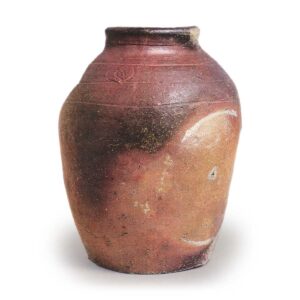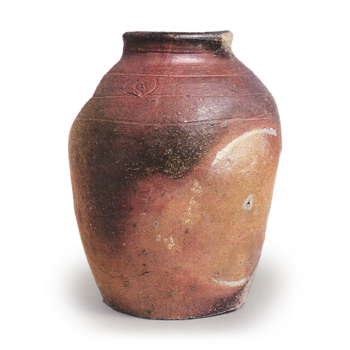
14th century
Height 30.5 cm, Bowl diameter 16.0 cm, Body diameter 23.3 – 24.5 cm, Bottom diameter 15.8 cm
Bizen ware did not begin to show its distinctive reddish-brown fire color until the late Kamakura period (1185-1333). At this time, reduction-fired pots were still in operation, and some of them were gray, so it is not possible to determine the period only by the color of the fire. The diameter of the neck of this jar is almost the same as that of the base, and the sloping shoulders suggest that this jar was made in the late Kamakura period. It is relatively thinly molded with a cord-shaped body, and the high firing temperature has caused considerable firing distortion. Three parallel sunken lines are drawn on the shoulder, and an inscription with two overlapping ovals is painted between the upper two lines. There is a circular mark on a part of the body, which is carbonized black, creating an unobtrusive scene. The body is covered with a cloudy white natural glaze from the mouth rim to a part of the body. The fire-colored coloring on the surface of the vessel is the best of all the ancient style jars with a sunken line design, and it is one of the representative examples of the late Kamakura period.



